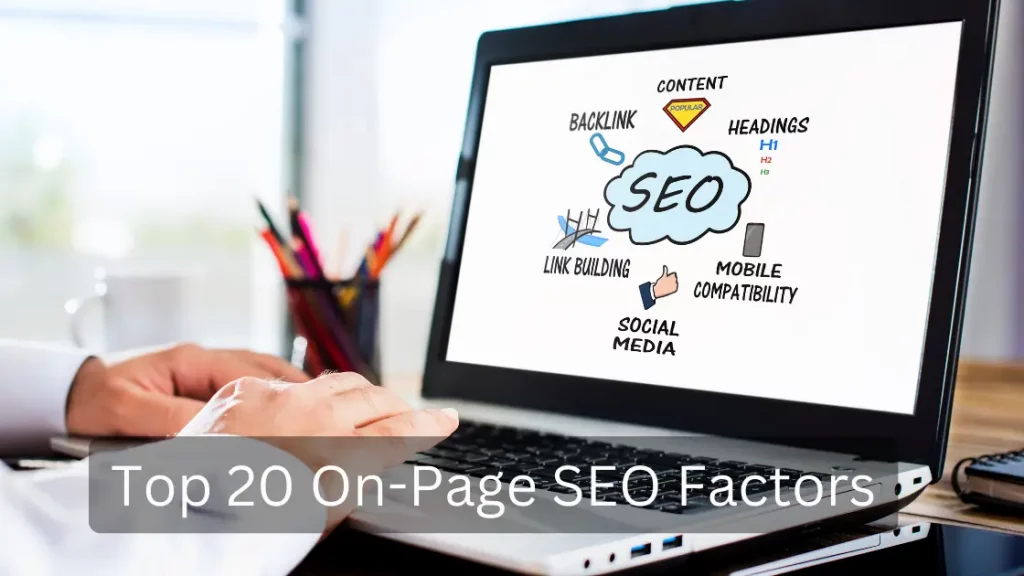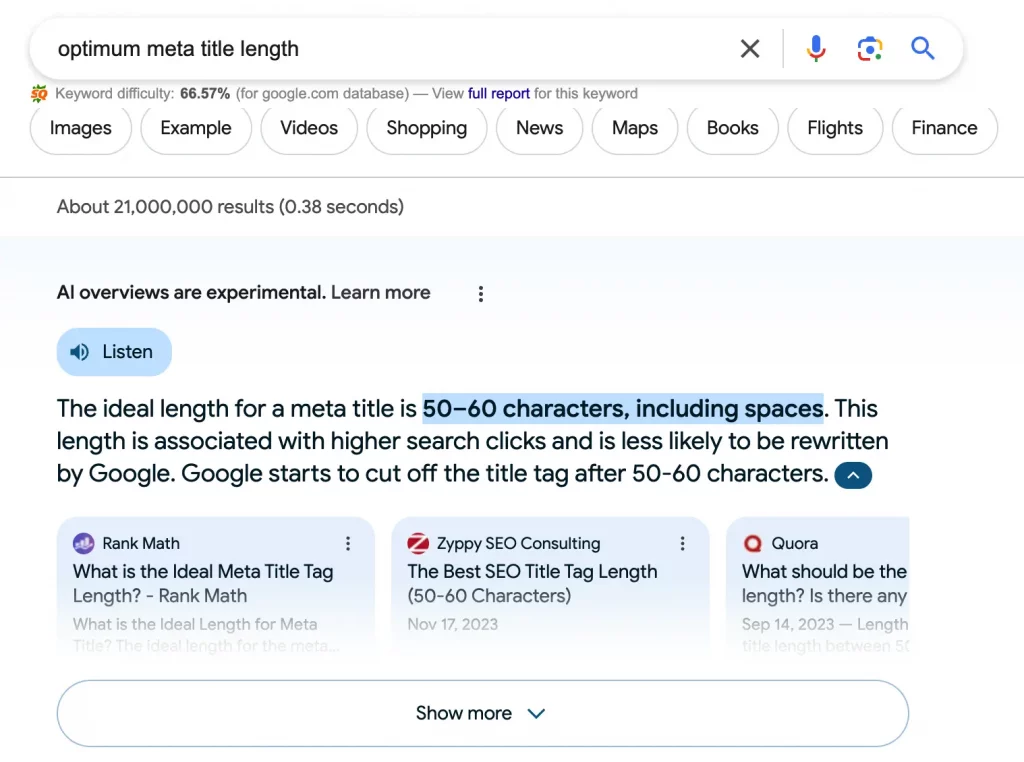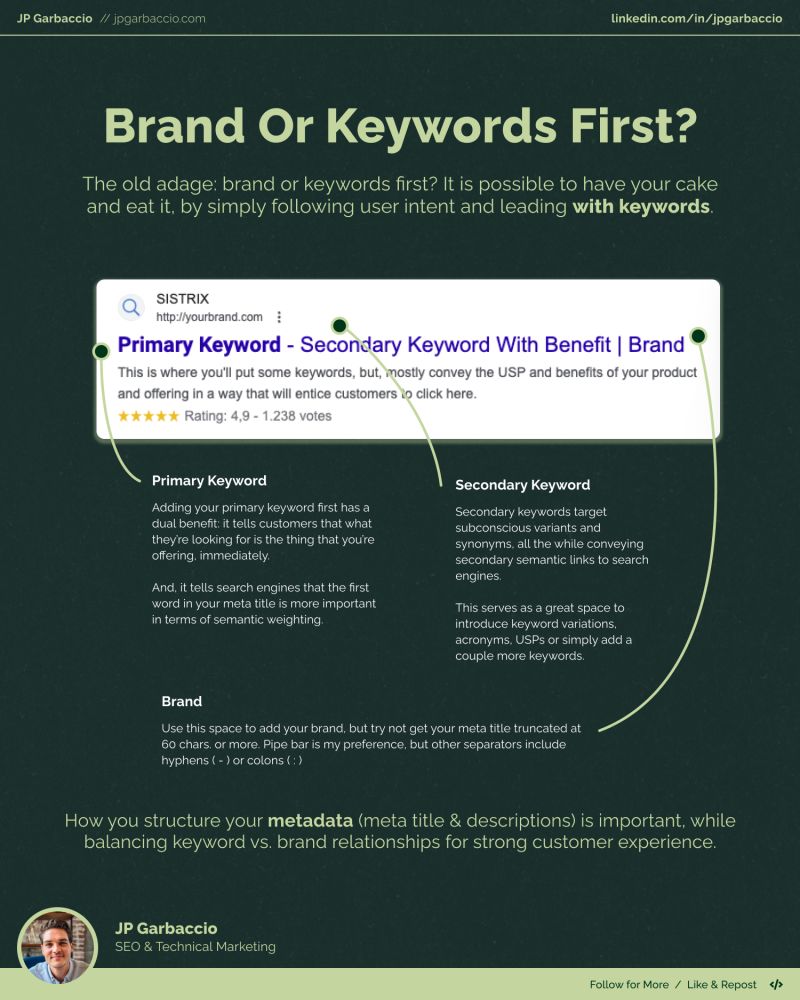Top 20 On-Page SEO factors that affects your search ranking

Your website is online, but is it truly alive? Just having it online isn’t enough.
In my experience, we stopped working on a website for eight months, and unsurprisingly, we saw a significant drop in organic traffic. So, what breathes life into a website?
Let’s dive into the world of content creation and explore how on page SEO factors improve content visibility across all search engines.
Content and Keywords: The Lifeblood of your website. Yes. Compelling content acts as the blood of your website, flowing through its pages and engaging your audience.
Keywords, on the other hand, are like the heart, pumping that content out to the world. Without both, your website risks becoming stagnant and ultimately, forgotten.
You might wonder why we’re even discussing content and keywords in an era dominated by AI.
While AI can churn out a great quantity of content in a short time and keeps the websites flooded with unreal content, Google still struggles to distinguish between human-written and AI-generated content.
Why does Google prioritize human content? Giving useful content for users is important but on the other hand, AI increases Google’s running cost.
Processing massive amounts of AI-generated content requires significant infrastructure investment for Google. Analyzing human-written content, on the other hand, provides a more predictable workload.
This influx of AI-generated content presents a challenge for Google.
They need to further refine their RankBrain algorithm to effectively differentiate between human-written and AI-generated content.
However, neglecting on page SEO factors that help Google understand the purpose of a webpage would be a mistake.
So, Google or any other search engines cannot ignore these factors at any stage.
I’ve identified the top 20 on page SEO factors to ensure your website pages are quickly understood by search engines, and help them to rank higher in a short span of time.
Try our free On Page SEO Checker tool to validate your website page.
Most important on page SEO factors
1. Meta title length
I understand that Google officials have previously mentioned that metadata is not a major factor in ranking algorithms, but I’ve never been convinced.
Google often extracts the title and description for the search engine results pages (SERPs) from the page content, yet not consistently.
Particularly, meta titles tend to be less dynamic and are frequently sourced directly from the metadata.
But, when you don’t follow the recommended meta title length, there is a high chance that you are essentially asking Google to take the meta title from the page content and ignore the metadata.
So, ensure that the meta title length is at least 60 characters.

Employing some clever strategies definitely no black hat SEO. Using 59 characters can sometimes be safer.
For tips on achieving the ideal meta title length and strengthening your title, you can read my article on this topic.
2. Keyword in meta title
When your meta title is well-optimized, Google is more likely to detect your primary keyword from the metadata.
Furthermore, it might also select random sentences from your article to display as a SERP title, depending on the user’s search intent.
However, it’s strongly recommended to keep your primary keyword in the meta title. Don’t just place it but make your title meaningful and clickbait.
NEVER use AI for meta titles. Go and check the top 20 results from the Google result and find the right intent that Google recognizes for the keyword and make a stronger and clickable meta title.
3. Keyword placement in meta title
The placement of keywords in the meta title is generally not considered a ranking factor as Google claims. However, in observing the top 10 results, I’ve noticed that 6 of them feature the keywords at the beginning of their meta titles.
Placing the primary keyword at the beginning of a meta title can make it challenging to form a meaningful and attractive sentence. However, it’s worth the effort to ensure it remains impactful.
In case it is too difficult, consider positioning it in the middle instead.
4. Meta description length
Same as meta title, If your web pages exceed the ideal length for the meta description, you’re officially allowing Google to select the optimal SERP description from the content itself.
Metadata is like a glossary or table of contents of SERP result pages. When you are not following the ideal length either on meta title or description, it leads the users to confuse what your article is about.
The ideal length of your meta description should be 160 characters.
Everyone knows, SERP results pages are formed by the metadata, sometimes meta descriptions are constantly taken from the page content based on the user’s search intent.
This is where semantic SEO becomes crucial. When writing an article, ensure you include all related and semantic keywords within the content.
Among various factors, metadata is considered as one of the most impactful on page SEO factors.
5. Keyword in meta description
Always ensure that your primary keyword is included in the meta description.
Google might select the primary keyword from your content or metadata, depending on the user’s search intent. However, for simple and straightforward search queries, Google typically displays the description directly from the metadata.
Read more about optimizing primary keywords in meta description.

6. URL Length
When you have a long URL, two specific issues can impact search rankings. Firstly, lengthy URL phrases might lose keyword focus, leading to diminished visibility in SERP, where users may not grasp the article’s focus.
SEO optimized URL length limit is between 50 to 60 characters.
7. Keyword in the URL
The primary keyword should be in the URL as it is one of the most important on page SEO factors like meta description and titles.
Bringing the keyword in the beginning of the URL has the greatest advantage.
8. Numbers in the meta title
The purpose of including numbers in the meta title is to make it more attractive and specific to your article’s topic.
For example, consider this blog meta title ‘Top 20 On-Page SEO Factors,’ which clearly indicates the content’s focus on 20 important factors.
This cannot be achieved for all the page URLs, but wherever it is possible to add the numbers don’t ignore it.
Previously, numbers in the meta title played a vital role in securing Google’s featured snippets. However, Google has now shifted focus towards AEO (Answer Engine Optimization) instead of the traditional featured snippets.
9. Power words in the meta title
Power words are also used in the meta title to grab the attention of users who view your link on the Google search results page.
Here is the complete list of power words you can use in meta titles.
10. External links in page
Adding external links as resources can enhance the authenticity of your content, which is highly valued by Google’s spiders.
There are many important guidelines to follow when adding external links to your page. I will detail all these rules in a separate blog post or how-to article.
For certain pages, like product or service pages, it is not mandatory to add external links.
11. Internal links in page
We have discovered that internal links are crucial for on-page SEO. In my view, Google recognizes these internal links as a keyword glossary for your website.
When your website is filled with lots of useful articles, ensure they are properly interlinked with related articles using relevant keywords.
Ignoring internal links on your webpage won’t harm your ranking, but it reduces the potential for keyword ranking improvements when topics aren’t adequately interconnected through internal linking.
12. Keyword spamming
In terms of on page SEO factors, keyword spamming refers to a distinct issue. For instance, if you’re writing an article on ‘Best Running Shoes,’ you must ensure that this keyword is never linked to any internal or external resources in your article.
This practice can confuse search engines. Additionally, if you add an external link using the same keyword, users might follow that link to a similar topic and could perceive your article as less valuable.
13. Page content length
Many AI content writers examine the SERP pages and the content length of all the top 10 links, recommending that a new article should match or exceed this length.
In my view, content length is significant primarily for achieving an adequate keyword density, a substantial length is necessary. However, focusing merely on keyword density isn’t enough. It’s crucial to also include relevant topics that can naturally extend your content.
We’ve conducted a few experiments regarding content length. Interestingly, we’ve managed to outrank competitors for keywords with a search volume of 4,000 using just 2,000 word articles. However, even with 5,000 word articles, we couldn’t even secure a spot in the top 20 for keywords with just 200 search volume.
So, content length matters with perspective achieving the right keyword density.
14. Header tags
I understand the reasoning behind calling these tags headers. It’s commonly believed, and I agree, that Google’s spiders use headers to navigate and understand the content’s meaning.
That’s why it’s strongly advised to always use header tags correctly, in the hierarchical order of H1, H2, H3, and so forth. Mixing up this order can negatively impact crawling.
Content without header tags can still rank, but not as effectively as content that utilizes proper header tags. Typically, any content you publish should have at least one header focusing on the topic.
However, using related header tags in your content enhances its reachability through semantic keyword searches derived from those headers.
15. Questions in H tags
Typically, long-tail keywords are used in questions, and it’s highly recommended to align them with your content and include them in the H tags.
This approach provides clear visibility to both readers and search engines.
Whenever you identify relevant questions that serve as long-tail keywords, I strongly advise incorporating them into your headers rather than dispersing them throughout the content paragraphs.
16. SEO friendly paragraphs
Focusing content solely on search engines can compromise reader comfort. If readers don’t engage with your content, despite its quality, it’s not considered valuable by Google’s crawlers.
Therefore, using shorter paragraphs, unlike the long ones found in hardcover books, can make the reading experience more comfortable. Try not to exceed more than 3 lines per paragraph.
Given the high distraction factors online, it’s crucial that readers can easily resume where they left off in your content.
17. SEO friendly sentence structure
Using short sentences may not directly influence ranking factors, but it does enhance reader comfort.
Articles that are well-structured and of high quality deserve to rank higher.
So, aim to keep your sentences to a maximum of 20 words and ensure that each paragraph in your article does not exceed three sentences.
18. Keyword placement
While keyword stuffing is no longer advisable, we’ve discovered a formula that consistently works for us in every article we write.
Positioning the primary keyword within the first 10% of the content has proven to be highly effective.
This step is crucial for informing search engines about the topic of your article. Failing to include the keyword early on can make it challenging for search engines to grasp the article’s meaning.
19. Keyword density
Keyword density is calculated using the following formula.
The ideal keyword density for SEO-optimized content is between 1% and 2%. This implies that in a 3000-word article, the keyword should appear at least 6 times.
My experience has shown that both underusing and overusing keywords can be ineffective. However, hitting the right balance confirms that keyword density indeed plays a crucial role.
20. Keywords in H tags
As I mentioned earlier in this article, H tags are one of the most important on page SEO factors. When you use the header tags, the content becomes powerful for search engines.
Ensure to include the primary keywords in the headers. As long as it’s relevant, you can insert the keywords multiple times in the content’s headers.
It’s also important to incorporate secondary and long-tail keywords in the content headers.
One key point to remember is to keep these headers simple. Avoid using overly stylized sentences.

